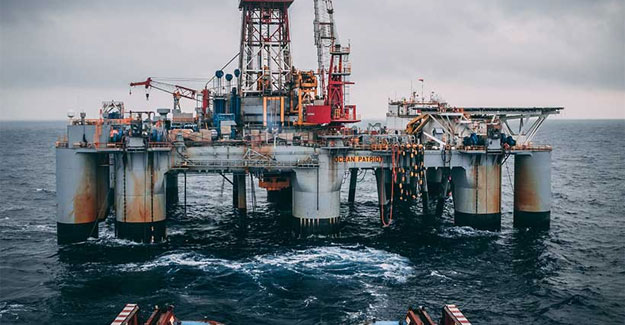Oil's Surge May Do Little To Derail India's Petrochemicals Growth: SABIC
- SABIC expects petrochemicals demand to grow faster than GDP
- Oil volatility had mixed impact on petchem margins: Platts Analytics
- Petrochemicals face challenges from tougher environmental scrutiny
India is witnessing strong petrochemicals demand recovery and the rise in crude prices is unlikely to create hurdles for the sector which is expected to grow faster than the country's GDP in the foreseeable future, Janardhanan Ramanujalu, SABIC's vice president and regional head for South Asia, Australia and New Zealand, said.
He added that for the next 5-6 years, India's petrochemicals sector growth would range between 1.2 to 1.4 times the GDP growth rate of India, which would translate to an annual growth rate of about 8%-10%.
Commenting on the impact of high oil prices on India's domestic petrochemicals sector, Ramanujalu said that India's petrochemical industry continued to grow sharply when crude oil had climbed to a record $140/b, while it also grew at a similar rate when oil was at $40/b. "Since the petrochemical industry enables other industries to multiply, the growth is derived from end consumer demand more than being influenced by the feedstock pricing or crude pricing," he added.
Indian petrochemical feedstock slate is a diverse mix of naphtha, ethane and LPG, and recent volatility in crude oil and natural gas prices had a mixed impact on petrochemical margins. Platts Analytics projects that margins for the olefins sector of Indian petrochemicals will remain strong in the foreseeable future because of high level of feedstock flexibility and integrated refinery-based feedstock availability over the medium term.
Areas of focus
Ramanujalu said India offered opportunities to grow SABIC's business in areas, such as basic chemicals, intermediaries, and polymers, in addition to being a major player in the fertilizer industry, producing urea and DAP.
SABIC has been operating in India for more than 25 years with a specialty manufacturing unit in Baroda. The focus on the specialty unit will further grow in India, he added. "Basic chemicals, intermediaries and specialty products are the three major business focus areas for SABIC," Ramanujalu said.
He said that price arbitrage opportunities earlier this year had created an attractive window for India to export some of its products to western countries. "Sometimes, the fluctuations are a little bit significant due to specific events. The weather event earlier in the year in the US provided an opportunity for India to export to advanced economies. The arbitrage in prices helps us to be more competitive in exporting to those markets," he said.
"It is an opportunity to be grabbed by the Indian manufacturing industry because most of our product prices in India and Asia are cheaper compared to Europe or the United States," Ramanujalu added.
Dark clouds clearing
According to Platts Analytics, India's petrochemicals demand has been on a robust recovery path in 2021 after the pandemic-induced deviation from strong demand growth trend seen in 2020.
Polymer demand is projected to grow by 7%-9% over the next five years between 2022 and 2026. Indian imports of key polymers and chemical intermediates improved significantly in 2021, primarily due to strong demand from packaging, construction, and industrial sectors. For instance, India turned into a polypropylene net importer in 2021 from an exporting market in 2020.
In line with robust demand growth, multiple new petrochemical plants will be starting-up in 2022 and beyond. However, based on Platts Analytics projections, India will remain a major importer of key polymers despite major investments in the medium term.
Earlier this month, Abdulrahman Al-Fageeh, executive vice president of petrochemicals for SABIC, said that global petrochemicals demand was "healthy" but supply faces challenges from tougher environmental scrutiny and stricter carbon emissions regulations. Commenting on how SABIC was contributing to India's cleaner energy goals, Ramanujalu said the company was stepping up the use of renewable resources.
"In an operational sense now, almost 75% of our energy consumption in our centre in Bangalore comes from renewable sources. Our unit in Baroda is already on this journey. We hope to increase this further over a period. I think in that sense, we have started early, and we have reached some good milestones," he said.
According to a study by ICRA on the Indian chemical industry, a project commissioned by SABIC, the Indian chemicals industry is currently estimated to be worth US$ 178 billion. Domestic production is estimated to be US$ 166 billion, with the remaining being met by imports.
India is net importer of petrochemicals with annual exports of around US$ 39 billion and imports worth US$ 51 billion. The Indian specialty chemical segment is estimated to be around US$ 32 billion, according to the study.
Textile Excellence
Next News
from rs 66.10 to rs 139.40: this textile stock turned into a multibagger in 1 year!









